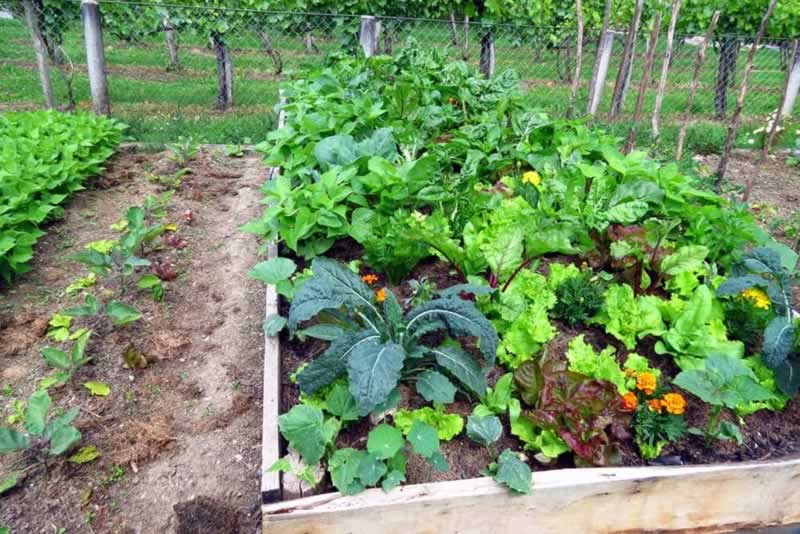When you’re a gardener, there isn’t anything you won’t do to ensure your plants stay healthy and happy. That includes keeping plants that aren’t fond of one another away from each other. However, many farmers and gardeners alike have fallen into the trap of forcing “enemy” plants to be neighbors, resulting in one or the other plant’s demise.

Multiple reasons dictate why you should sow certain plants separately. These issues include one plant attracting insects that are harmful to the other plant, competition for major resources, and cross-contamination.
The Importance of Planning Your Garden
If you’re setting up a small garden that requires plants to be planted near each other, make sure they get along well. That should also apply in a large garden, where adequate spacing influences how water and nutrients are appropriated and how pest control is delivered. Although science-backed information for determining plant incompatibility exists, it’s a “trial and error” method proven by experts to yield the best outcome. So, depending on the container and garden size and the list of veggies you want to grow, you may want to experiment. You can also check out this helpful guide and let it steer you in the right direction.
Reasons Certain Plant Combinations Just Won’t Do
A couple of rules of thumb are set for determining whether vegetables can be planted next to each other, among them are:
1. Light Requirements
First, consider the size of the garden plants and their light requirements. Plant a too-tall plant next to a short one, and there will be an issue with the tall one hogging all the sunlight. When planting tall and short vegetables next to one another, space them far enough away for sunlight to shine on them sufficiently. Many experienced gardeners solve this problem by designating an entire row for the shortest plants and positioning it on the garden’s edge. This method is also known as border planting.
2. Water and Fertilizer Needs
Then, you have plant combinations that just won’t work because of “water” issues. Particular plants that require a lot of water won’t hesitate to tap into their neighbor’s supply and cause them major discomfort. They’ll be equally as greedy with fertilizer, too. Before planting garden plants together, make sure their water and other nutritional needs align with each other. Of course, an exception to this rule would be if both plants are extremely competitive. In this case, you can make things work by giving the plants a wider space and providing them more water and fertilizer.
3. Allelopathy
There’s also the issue of allelopathy. It is a quality possessed by certain plants that is detrimental to their neighbors. Allelopathic plants are capable of chemically impeding the vital systems of the ones they’re competing with. While weeds are usually the culprit in most cases, some types of crop and landscape plants also leave behind allelopathic chemicals. Scientists have been continually observing such behavior in these plants to provide better strategies for weed control.

While many plants are believed to possess allelopathic properties, there still isn’t enough substantial documentation to back this up scientifically. Not too much research has been done in this area, but the following plants are strongly suspected of having allelopathic behaviors:
- Tomatoes
- Sunflowers
- Soybeans
- Peas
- Cucumbers
- Cabbage
- Broccoli
- Beans
- Beats
- Asparagus
The more obvious allelopathic relationships are present in plants like tomatoes, corn, and eggplants, which have a common enemy: the black walnut. Also, broccoli in the garden requires you to have sufficient knowledge of crop rotation. That is because broccoli can leave behind a specific type of residue that other cruciferous crops can’t bear. Then, you have alfalfa, which exhibits a special type of allelopathy that impedes its seeds’ germination. Garlic and onions, too, have been known to display the same capabilities towards peas and beans. Although, for the most part, they are friendly with other garden inhabitants.
4. Cross-Contamination
Lastly, you have cross-contamination, which could lead to the easy and quick spreading of bacterial and fungal infections and parasites. This is typically the case for certain plants, like tomato and corn, which are prone to the same kind of infection or disease. The same goes for peppers and potatoes, as well as potatoes and tomatoes. Thus, always make sure to plant these plants on opposite ends of your garden. That way, they won’t be responsible for taking out one another.
To Plant or Not to Plant?
Unless it is scientifically known that planting certain plants and vegetables next to each other will yield wonderful results, you’ll want to think twice about planting things closely together. Sometimes a little bit of research and experimentation is the only way to know for sure if certain plant types can be great neighbors. That said, the best way is to make sure each of your plants receives its growth requirements.






